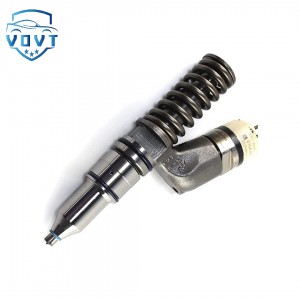New High Quality Diesel Injector 211-3027 10R-0959 229-5919 10R-0959 234-1400 10R-1000 For CAT C15
Products Description
| Reference. Codes | C15 |
| Application | C15 |
| MOQ | 4PCS |
| Certification | ISO9001 |
| Place of Origin | China |
| Packaging | Neutral packing |
| Quality Control | 100% tested before shipment |
| Lead time | 7~10 working days |
| Payment | T/T, L/C, Paypal, Western Union, MoneyGram or as your requirement |
What specific impacts do the injector’s flow characteristics have on engine emissions?
The flow characteristics of the injector are mainly determined by factors such as injection pressure, nozzle diameter, and injection time. These factors have a variety of specific effects on engine emissions by affecting the fuel atomization effect, the quality of the mixture formation, and the combustion process. The following is a detailed introduction:
Effects on nitrogen oxide (NOx) emissions
Injection pressure: Higher injection pressure can make the fuel atomized better, the oil and gas in the combustion chamber more evenly mixed, the combustion more complete, the combustion temperature increased, and the combustion speed accelerated. High temperature promotes the reaction between nitrogen and oxygen in the air, which increases the amount of NOx generated.
Injection time: Early injection will cause the fuel to be injected into the combustion chamber earlier during the compression stroke, prolong the combustion duration, and the combustion process is closer to the top dead center. The pressure and temperature in the cylinder increase, and NOx emissions increase. Delaying injection will cause the combustion process to move back, the temperature and pressure in the cylinder to decrease, and the amount of NOx generated will decrease, but it will lead to incomplete combustion and increase emissions of other pollutants.
Impact on particulate matter (PM) emissions
Injection pressure: Under low injection pressure, the fuel atomization effect is poor, the oil droplet size is large, the fuel and air are not fully mixed, and local hypoxia areas are easily formed, resulting in fuel cracking to generate soot particles, which increases PM emissions. Increasing the injection pressure can improve fuel atomization, reduce the oil droplet size, mix more evenly with air, reduce local hypoxia, and thus reduce PM emissions.
Nozzle diameter: If the nozzle diameter is too large, the injection rate is high, the fuel is unevenly distributed in the combustion chamber, and fuel concentration areas are likely to appear, resulting in incomplete combustion and increased PM emissions. A smaller nozzle diameter can make the fuel more evenly dispersed, which is conducive to reducing PM emissions, but a nozzle diameter that is too small will increase the injection resistance and affect the reliability of the injector.
Injection time: If the injection time is too long, the fuel stays in the combustion chamber for a longer time, and the fuel burned later may produce soot due to insufficient oxygen, increasing PM emissions. Reasonable control of the injection time so that the fuel is injected into the combustion chamber and fully burned within the appropriate time will help reduce PM emissions.
Effect on hydrocarbon (HC) emissions
Injection pressure: When the injection pressure is insufficient, the fuel atomization is poor, and part of the fuel cannot be mixed with the air in time and participate in the combustion, and will be discharged in the form of unburned HC, resulting in increased HC emissions. Properly increasing the injection pressure and improving the fuel atomization and mixing effects can make the fuel burn more fully and reduce HC emissions.
Injection time: If the injection time is too short, the fuel cannot be completely injected into the combustion chamber, and some fuel will gather near the injector and cannot participate in the combustion in time, thereby increasing HC emissions. If the injection time is too long, it may lead to excessive fuel in the late stage of combustion, insufficient oxygen, incomplete combustion, and increased HC emissions.
Effect on carbon monoxide (CO) emissions
Injection pressure: Low injection pressure leads to poor fuel atomization and mixing effects. During the combustion process, oxygen and fuel cannot fully contact, and incomplete combustion is prone to occur, which increases CO emissions. Increasing the injection pressure helps to improve combustion conditions, make the fuel burn fully, and reduce CO emissions.
Injection timing: Inappropriate injection timing, such as injection too early or too late, will cause the combustion process to deviate from the optimal state, resulting in incomplete combustion and increased CO emissions. Only at the appropriate injection timing can the fuel be fully mixed with the air and completely burned, thereby reducing CO emissions.























